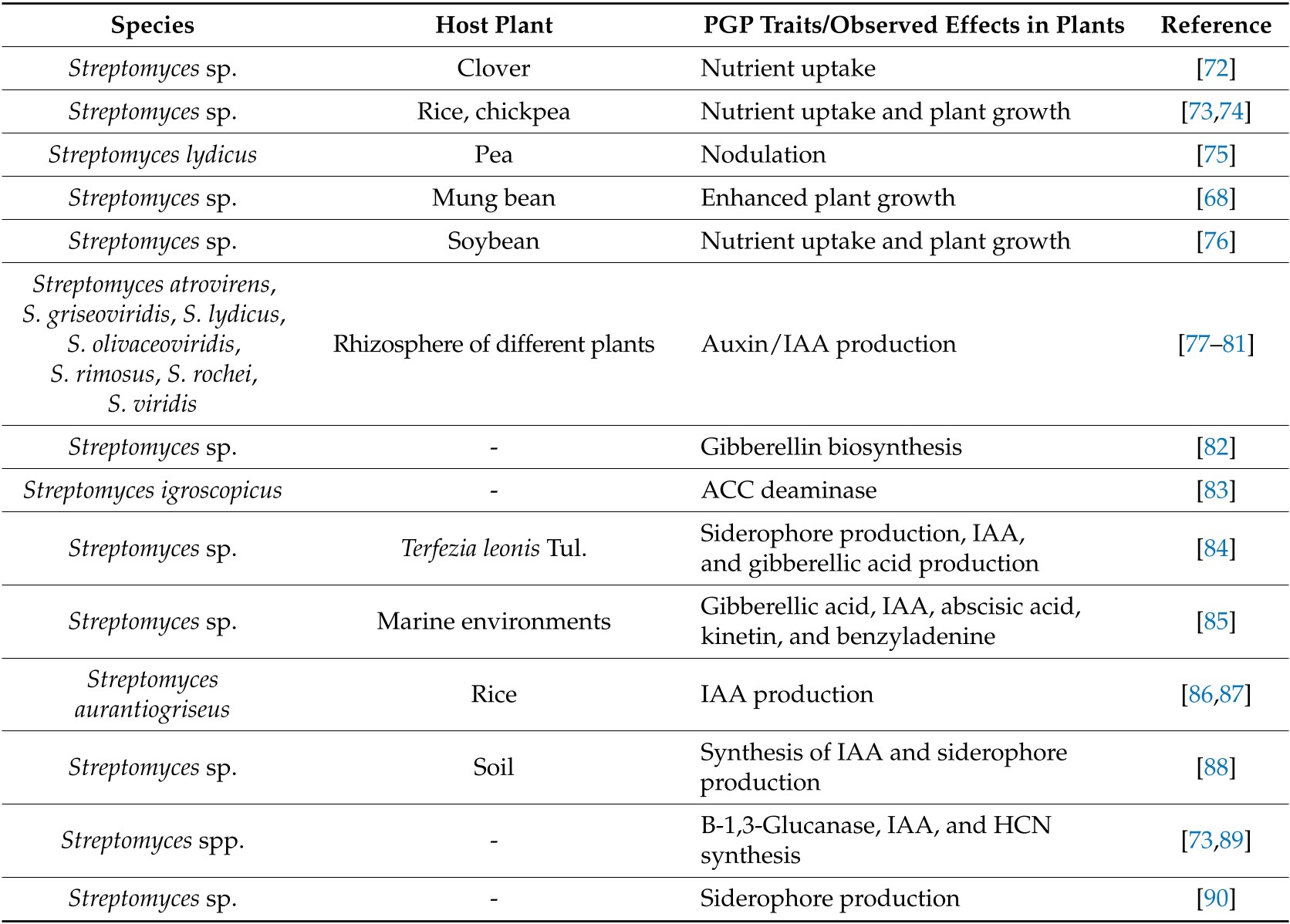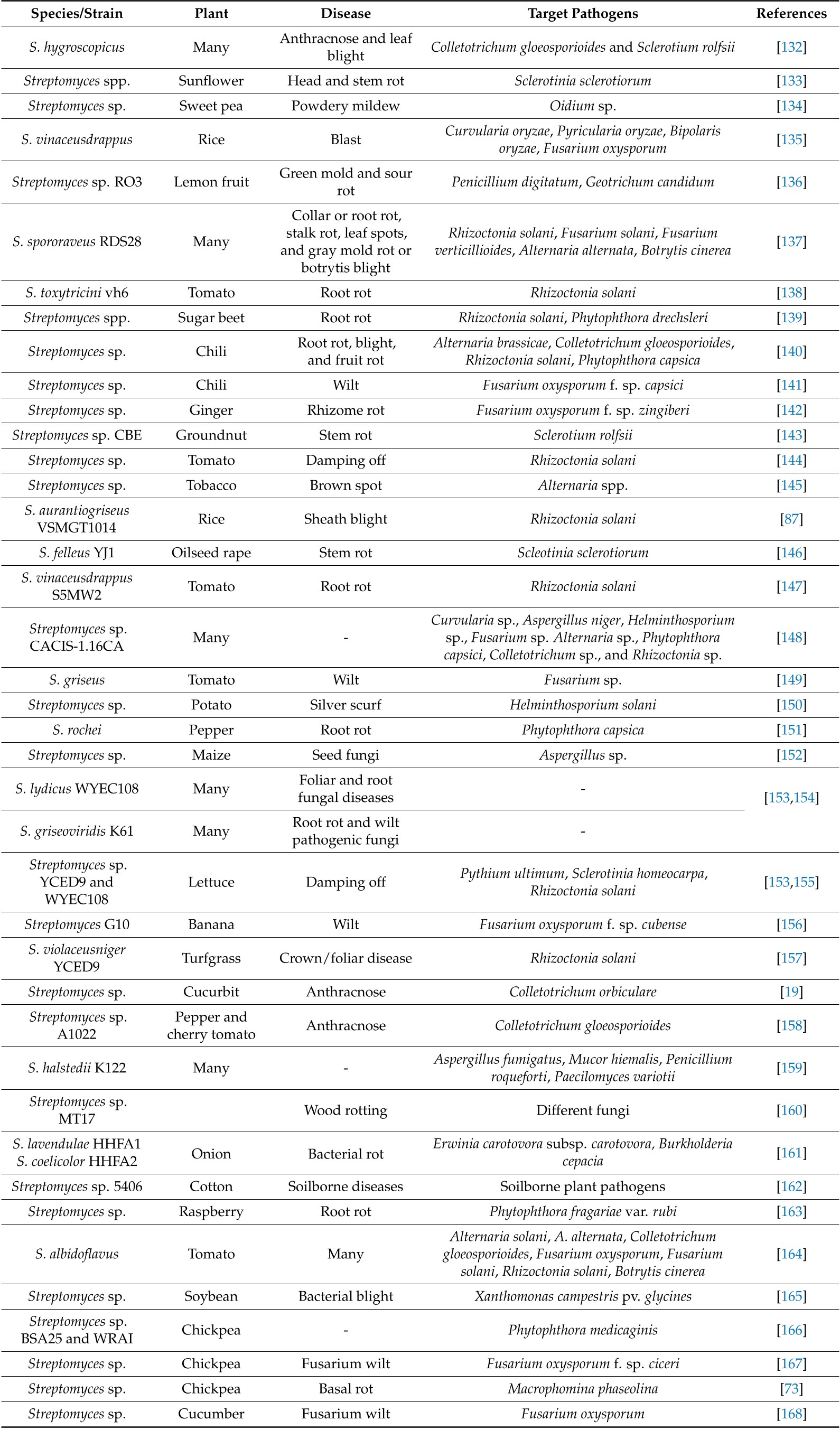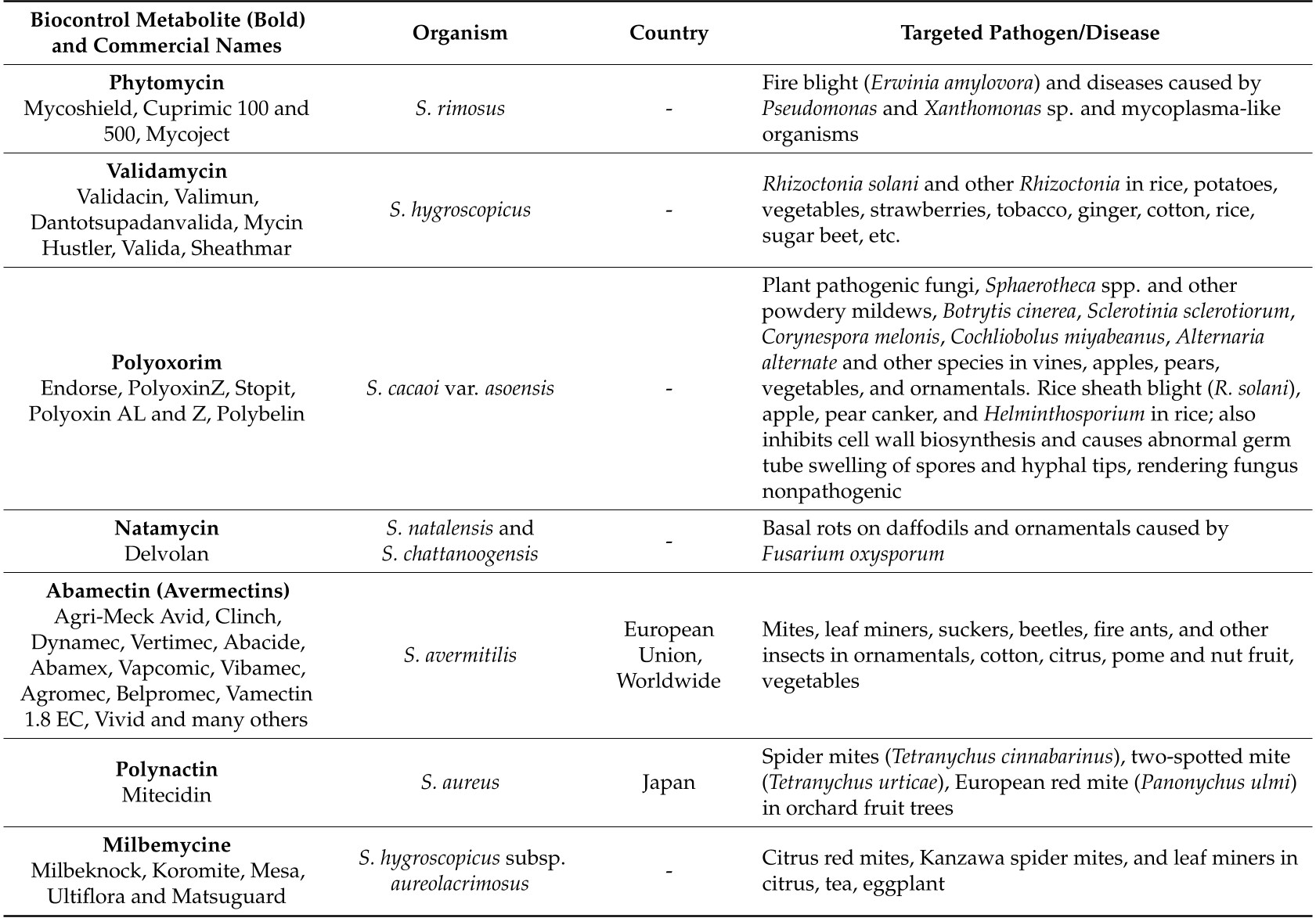Review paper
Plant Growth Promoting and Biocontrol Activity of Streptomyces spp. as Endophytes
Volume: 19, Issue: 4, Pages: 952 - 952
Published: Mar 22, 2018
Abstract
There has been many recent studies on the use of microbial antagonists to control diseases incited by soilborne and airborne plant pathogenic bacteria and fungi, in an attempt to replace existing methods of chemical control and avoid extensive use of fungicides, which often lead to resistance in plant pathogens. In agriculture, plant growth-promoting and biocontrol microorganisms have emerged as safe alternatives to chemical pesticides....
Figures & Tables

Figure 1. Representation of possible plant–microbe interactions favouring plant ...

Figure 2. In vitro biocontrol activity of Streptomyces spp.: (a) antimicrobial a...

Table 1. List of streptomycetes isolated from plants or the rhizosphere showing ...

Table 2. Biocontrol activity of several Streptomyces spp. against different fung...

Table 2. Cont.

Table 3. List of Streptomyces spp.-based products available in the market worldw...

Table 4. List of active substances derived from Streptomyces spp. (in bold) and ...

Table 4. Cont.
Paper Details
Title
Plant Growth Promoting and Biocontrol Activity of Streptomyces spp. as Endophytes
Published Date
Mar 22, 2018
Volume
19
Issue
4
Pages
952 - 952
TrendsPro
You’ll need to upgrade your plan to Pro
Looking to understand a paper’s academic impact over time?
- Scinapse’s Citation Trends graph enables the impact assessment of papers in adjacent fields.
- Assess paper quality within the same journal or volume, irrespective of the year or field, and track the changes in the attention a paper received over time.
Citation AnalysisPro
You’ll need to upgrade your plan to Pro
Looking to understand the true influence of a researcher’s work across journals & affiliations?
- Scinapse’s Top 10 Citation Journals & Affiliations graph reveals the quality and authenticity of citations received by a paper.
- Discover whether citations have been inflated due to self-citations, or if citations include institutional bias.